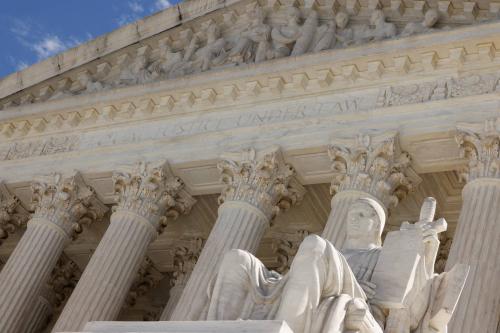Constitution Day (the birth date, by the way, of Chief Justice Warren E. Burger) falls about two weeks before the first Monday in October and the start of the Supreme Court’s 2010-11 term. So far the court has agreed to hear oral argument in 38 cases—including a hefty number of commercial and of criminal defendant cases—and will add more at its September 27, post summer recess conference. In its 2009-10 term, according to SCOTUSblog, it decided 86 cases, 72 after oral argument. That number contrasts with the 8,000 or so cases in recent years that court simply decides not to decide.
Contrast that with the 1960s, when parties asked the court to decide around 2,000 to 3,000 cases annually, of which it usually decided around 300. This change points up a major difference between today’s Supreme Court and previous incarnations. When created, the court had no control over its case load. That led to major backlogs after the Civil War. About a hundred years ago, Congress started giving the court discretion about what to decide, to the point that today, the court’s mandatory jurisdiction is tiny—letting it pick and chose its battles, somewhat like a legislature does.
Probably the most closely watched case it’s so far taken this term involves Kansas church members’ claims that the First Amendment protects their picketing military funerals, contending that the deaths are God’s punishment for national tolerance of homosexuality. Another case, with issues similar to the recent federal case in Arizona, asks whether federal law preempts an Arizona statute regulating employment of illegal aliens.
The newest Justice, Elena Kagan, won’t participate in that case—or in at least nineteen others, according to Tony Mauro of the Legal Times Blog, because she was involved in one way or another in them as Solicitor General. One case in which none of the Justices will participate—because the court declined to review it—involves U.S. law suits against tobacco companies seeking disgorgement of profits for misleading and dishonest statements about health effects of tobacco, statements the companies claim the First Amendment protects.
The court’s menu is not all hot-button. Its first case on October 4 involves this snoozer: should bankruptcy courts, in determining how much of a debtor’s income may be protected from creditors, deduct motor vehicle expenses only if the debtor doesn’t own the vehicle free and clear? A lower court wrote that the “‘correct’ answer to the question . . ., which the courts have been struggling with for years—at the unnecessary cost of thousands of hours of valuable judicial time—depends ultimately not upon our interpretation of the statute, but upon what Congress wants the answer to be.” Perhaps because Congress has declined to say, the court agreed to resolve the matter (not one, we can guess, that was much on the minds of the Constitution’s framers).



Commentary
Constitution Day 2010 and the Supreme Court’s Docket
September 17, 2010